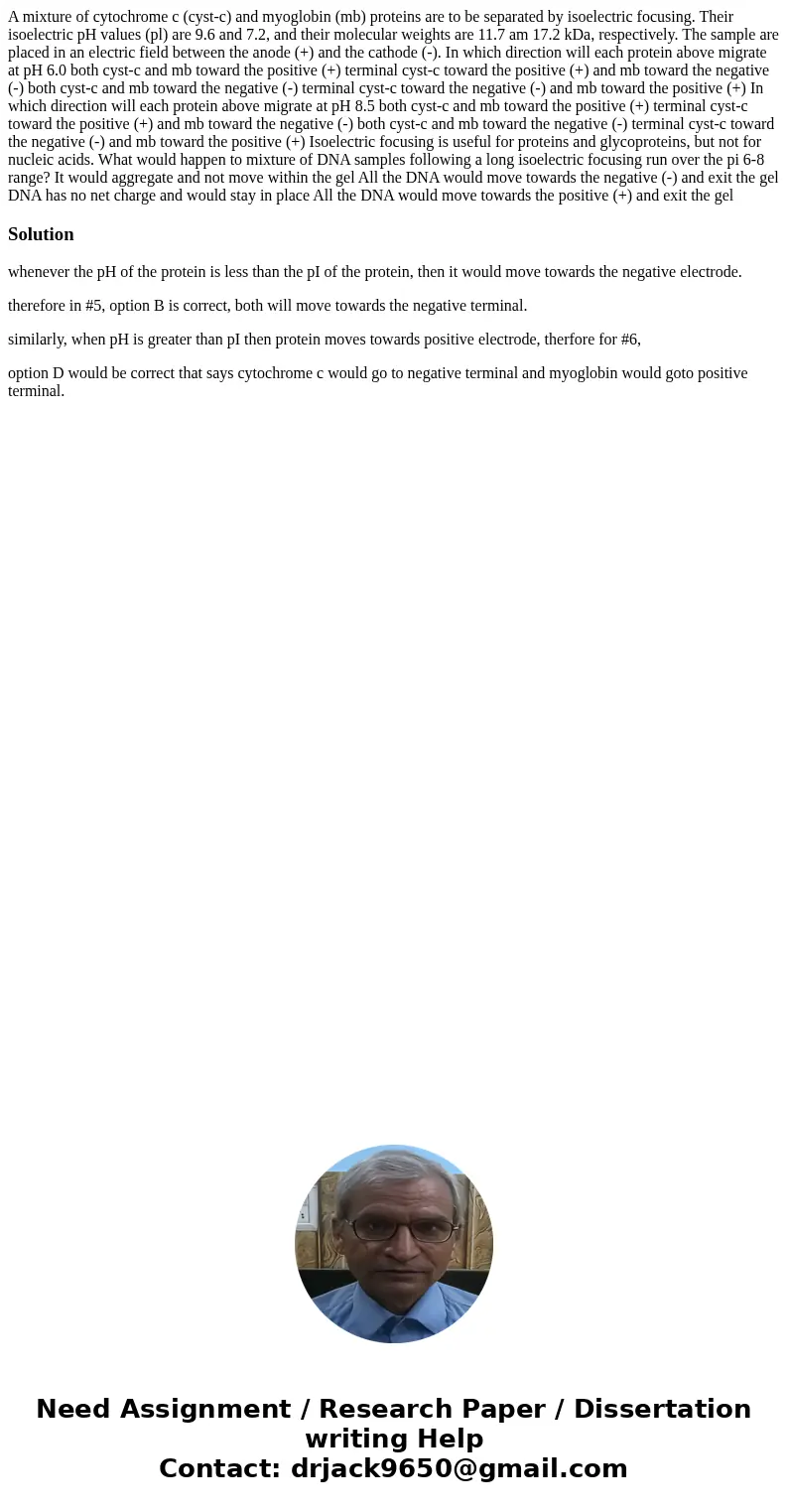A mixture of cytochrome c cystc and myoglobin mb proteins ar
A mixture of cytochrome c (cyst-c) and myoglobin (mb) proteins are to be separated by isoelectric focusing. Their isoelectric pH values (pl) are 9.6 and 7.2, and their molecular weights are 11.7 am 17.2 kDa, respectively. The sample are placed in an electric field between the anode (+) and the cathode (-). In which direction will each protein above migrate at pH 6.0 both cyst-c and mb toward the positive (+) terminal cyst-c toward the positive (+) and mb toward the negative (-) both cyst-c and mb toward the negative (-) terminal cyst-c toward the negative (-) and mb toward the positive (+) In which direction will each protein above migrate at pH 8.5 both cyst-c and mb toward the positive (+) terminal cyst-c toward the positive (+) and mb toward the negative (-) both cyst-c and mb toward the negative (-) terminal cyst-c toward the negative (-) and mb toward the positive (+) Isoelectric focusing is useful for proteins and glycoproteins, but not for nucleic acids. What would happen to mixture of DNA samples following a long isoelectric focusing run over the pi 6-8 range? It would aggregate and not move within the gel All the DNA would move towards the negative (-) and exit the gel DNA has no net charge and would stay in place All the DNA would move towards the positive (+) and exit the gel 
Solution
whenever the pH of the protein is less than the pI of the protein, then it would move towards the negative electrode.
therefore in #5, option B is correct, both will move towards the negative terminal.
similarly, when pH is greater than pI then protein moves towards positive electrode, therfore for #6,
option D would be correct that says cytochrome c would go to negative terminal and myoglobin would goto positive terminal.

 Homework Sourse
Homework Sourse